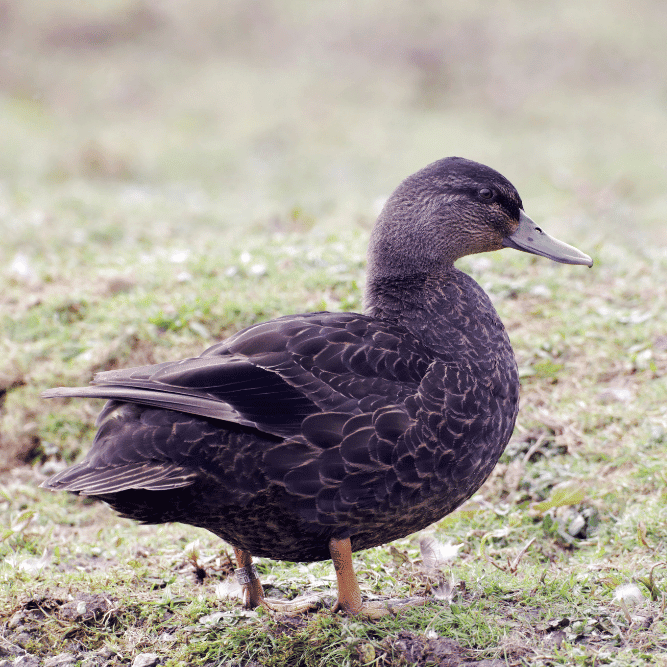American Black Duck

Introduction
Bird facts and BTO data for Black Duck (Anas rubripes) - abundance, distribution, population trends, demographic factors and biometrics, along with other facts and trivia.

Key Stats
Status and Trends
Conservation Status
Population Size
Population Change
Population trends of this scarce species are not routinely monitored.
Distribution
This species is a rare vagrant and was recorded during Bird Atlas 2007–11 as shown on the map.
Occupied 10-km squares in UK
2007/08–10/11
or view it on Bird Atlas Mapstore.
2008–11
or view it on Bird Atlas Mapstore.
Distribution Change
This vagrant is too rarely reported to map distribution change.
Seasonality
This species has been too rarely reported to BirdTrack during 2011–22 to properly assess seasonality.
Movement
Britain & Ireland movement
Biology
Survival and Longevity
Survival is shown as the proportion of birds surviving from one year to the next and is derived from bird ringing data. It can also be used to estimate how long birds typically live.
Classification, names and codes
Classification and Codes
- Order: Anseriformes
- Family: Anatidae
- Scientific name: Anas rubripes
- Authority: Brewster, 1902
- BTO 2-letter code: BD
- BTO 5-letter code: BLADU
- Euring code number: 1870
Alternate species names
- Catalan: ànec negrós
- Czech: kachna tmavá
- Danish: Sortbrun And
- Dutch: Amerikaanse Zwarte Eend
- Estonian: nõgipart
- Finnish: nokisorsa
- French: Canard noir
- German: Dunkelente
- Hungarian: kormos réce
- Icelandic: Brúnönd
- Irish: Lacha Chosrua
- Italian: Anatra nera americana
- Latvian: sarkankaju pile
- Lithuanian: tamsioji antis
- Norwegian: Rødfotand
- Polish: brazówka
- Portuguese: pato-escuro-americano
- Slovak: kacica cernastá
- Slovenian: temna mlakarica
- Spanish: Ánade sombrío
- Swedish: svartand
- Welsh: Hwyaden Ddu America
More Evidence
More evidence from Conservation Evidence.com
Partners
Citing BirdFacts
If you wish to cite particular content in this page (e.g. a specific value) it is best to use the original sources as linked in the page. For a more general citation of the whole page please use: BTO (20XX) BirdFacts Species: profiles of birds occurring in the United Kingdom. BTO, Thetford (www.bto.org/birdfacts, accessed on xx/xx/xxxx).

